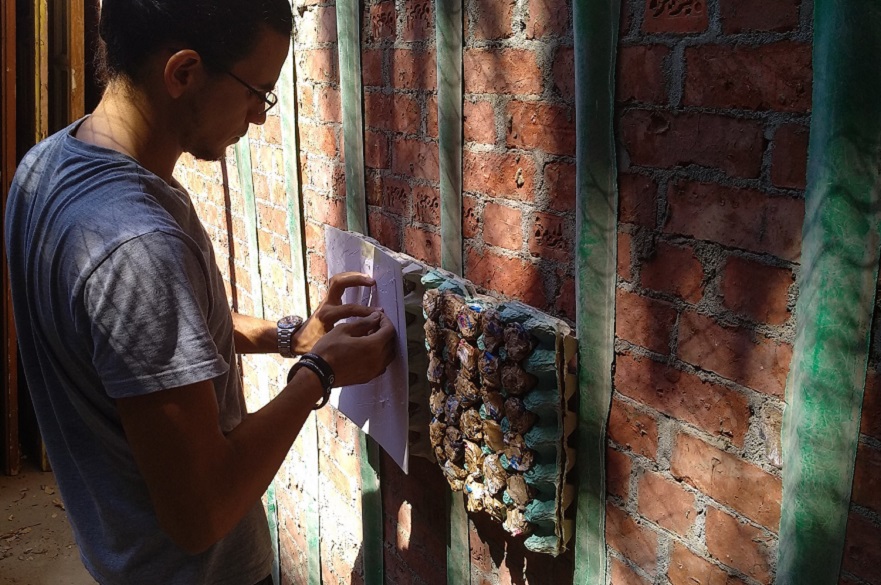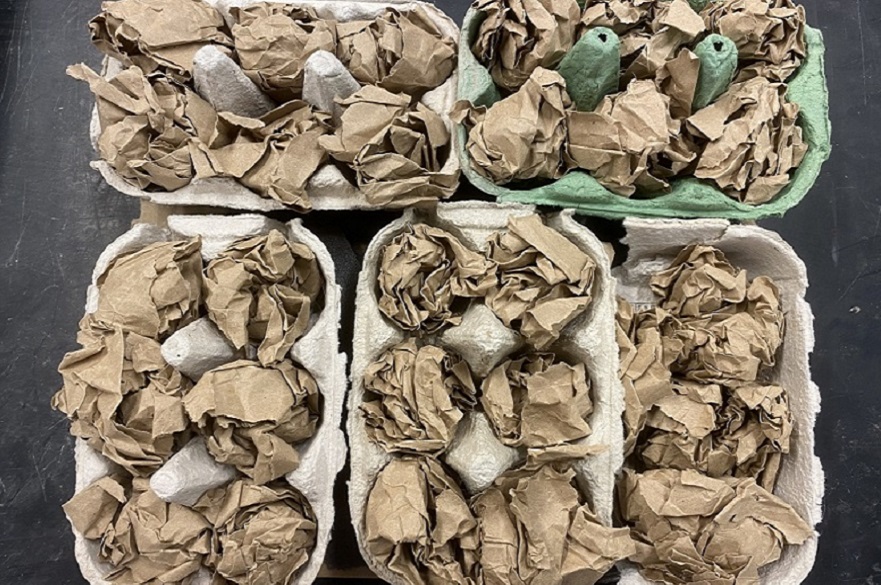Study shows how waste can be used to insulate homes in hot regions
Waste materials, including egg trays and plastic takeaway lunch box lids, can be used to insulate homes in hot arid regions to considerably improve their energy efficiency, a new study shows.

Waste materials, including egg trays and plastic takeaway lunch box lids, can be used to insulate homes in hot arid regions to considerably improve their energy efficiency, a new study shows.
Research by sustainable architecture and engineering expert Farres Yasser – a PhD candidate at Nottingham Trent University – shows that a composite of egg trays, cardboard, polypropylene plastic lids and Styrofoam can be used to retrofit single brick homes with exterior wall insulation.
A range of tests took place in Cairo, Egypt, where the materials are commonly available for free, with more than 23 per cent of the city’s waste being made up of paper, cardboard and plastic.
The study – which involved practical experiments with the support of local tradespeople –shows a sustainable way to insulate homes in hot arid regions like Egypt, where more than 70 per cent of homes are considered to be insulated poorly.
“Reusing waste to create new products will not only save precious natural resources, but it has the potential to save $1 trillion on new materials within the next decade,” said Mr Yasser, of the School of Architecture, Design and the Built Environment.
“This study clearly demonstrates the true potential for how commonly discarded materials like egg trays and Styrofoam can be used to transform the way we insulate homes.
“Not only are these materials largely available for free, but by working with local tradespeople and residents, we have demonstrated how a composite insulation can be compressed easily in an environmentally friendly way.”

The materials were collected free of charge from local suppliers, including kiosks and takeaway kitchens, which were otherwise looking to throw them away.
The insulation was made by filling egg trays with papier-mâché to make a thick insulative composite layer, before placing the lids from discarded plastic lunch boxes on one side and discarded Styrofoam on the other. A fire retardant is added at this point to ensure the insulation complies with any necessary safety regulations.
The materials were then glued together with sand and Adibond 65, a versatile adhesive, and compressed with a considerable weight, using only gravity to compress the materials together.
A two-centimetre eco mortar - made of sand, dirt, Adibond 65 and cement – was applied to the outer shell to allow for plastering and various aesthetic finishes.
Experiments undertaken during summer showed that a single red brick test chamber insulated with the composite was cooler on average by 3°C than the same structure without insulation.
Similarly, during winter, the single brick chamber fitted with the composite provided was up to 3.6°C warmer than the control chamber, between 7am and noon.
Potential energy savings measure between 2000-3500 Kw h per household in the four hottest months of the year, depending on the type of cooling device used.
“Poor building materials, or single-layered red bricks homes, increase the use of heating, ventilation, and air conditioning (HVAC) systems, which produce carbon emissions all year round,” said Mr Yasser.
“This study shows how waste can take the place of conventional insulation materials which can be bad for the environment, and reveals the possibility of using unsophisticated, low-cost, and locally available methods to build insulation panels.
“These panels require little to no machinery to create and fossil fuel-free methods to collect, compress, and install. They are affordable and unhazardous and could lead to a fundamental reduction of carbon emissions throughout a building’s construction and lifetime.”
-
Notes for editors
Press enquiries please contact Chris Birkle, Public Relations Manager, on telephone +44 (0)115 848 2310, or via email.
Nottingham Trent University (NTU) received the Queens Anniversary Prize for Higher and Further Education in 2021 for cultural heritage science research. It is the second time that NTU has been bestowed the honour of receiving a Queen’s Anniversary Prize for its research, the first being in 2015 for leading-edge research on the safety and security of global citizens.
The Research Excellence Framework (2021) classed 83% of NTU’s research activity as either world-leading or internationally excellent. 86% of NTU’s research impact was assessed to be either world-leading or internationally excellent.
NTU was awarded The Times and The Sunday Times Modern University of the Year 2023 and ranked second best university in the UK in the Uni Compare Top 100 rankings (2021/2022). It was awarded Outstanding Support for Students 2020 (Times Higher Education Awards), University of the Year 2019 (Guardian University Awards, UK Social Mobility Awards), Modern University of the Year 2018 (Times and Sunday Times Good University Guide) and University of the Year 2017 (Times Higher Education Awards).
NTU is the 5th largest UK institution by student numbers, with nearly 39,000 students and more than 4,400 staff located across five campuses. It has an international student population of 7,000 and an NTU community representing over 160 countries.
Since 2000, NTU has invested £570 million in tools, technology, buildings and facilities.
NTU is in the UK’s top 10 for number of applications and ranked first for accepted offers (2021 UCAS UG acceptance data). It is also among the UK’s top five recruiters of students from disadvantaged backgrounds and was the first UK university to sign the Social Mobility Pledge.
NTU is ranked 2nd most sustainable university in the world in the 2022 UI Green Metric University World Rankings (out of more than 900 participating universities).
- Category: Press office; Research; School of Architecture, Design and the Built Environment


